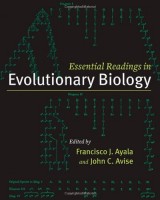 Editors: Francisco J. Ayala, and John C. Avise
Editors: Francisco J. Ayala, and John C. Avise
Publisher: Johns Hopkins University Press – 547 pages
Book Review by: Sonu Chandiram
This book is a collection, by two of the most distinguished evolutionary biologists, of 48 classic papers on evolution written by the world’s foremost researchers and scientists on the subject. The articles span in chronological order – from Charles Darwin’s 1859 renowned work on the origin of species to S.B. Carroll’s 2003 writings on genetics and the making of Homo Sapiens – about 150 years of scholarly thought.
That period began with the “foggy” nineteenth century birth of evolutionary biology to an important event – the mapping of the human genome towards the end of the twentieth century.
The range of subjects covered in these papers is large. Among them are:
- Adaptation
- Chromosome speciation
- Complex design
- Human genome
- Mutation
- Natural selection
- Pseudo genes
In their Introduction, Ayala and Avise quote evolutionary geneticist Theodosius Dobzhansky: “Evolution is God’s, or Nature’s method of creation.” This statement essentially throws away the long-standing conflict between creation and evolution that exists in many people’s minds. Evolution was then, God’s way of creation.
Each of the 48 articles is reprinted in original form in this book the way it first appeared elsewhere. But the editors do the following to give each article a perspective:
- Explain why the article is important
- Place it in a broader conceptual context
- Provide a short list of papers that you might wish to consult for further information
Have you wondered why evolution occurred? It is stated plainly in first of papers presented in this collection – the well-known Darwin classic On the Origin of Species:
“ Again, it may be asked, how is it that varieties, which I have called incipient species, become ultimately converted into good and distinct species, which in most cases obviously differ from each other far more than do the varieties of the same species? How do these groups of species, which constitute what are called distinct genera, and which differ from each other more than do the species of the same genus, arise?”
“All these results, as we shall more fully see in the next chapter, follow inevitably from the struggle for life.”
Struggle for life – that was, and continues to be, the main reason for evolution. Growing feet to be able to walk on land, for example; Growing wings, in order to be able to fly; Growing gills in order to be able to breathe underwater. Growing spiny hair to be able to defend oneself from attacking animals – these are some of the adaptations that some species and genera in past took on, in their struggle to survive.
Darwin goes on to write that the changes in one group of animals will be inherited by its offspring so that they will have a better chance of surviving. He wrote that only a small number ultimately survived. He called that the principle of Natural Selection.
This is a unique book from which you can learn about evolution from the best of the best in this field over a period of 150 years, beginning with Charles Darwin. The unique value of this book is that for the first time, all the important works in evolutionary biology have been put together in a single volume. And that job was done superbly by two of today’s most distinguished men in this field – Professors Francisco J. Ayala and John C. Avise.
Francisco J. Ayala is Donald Bren Professor of Biological Sciences, Ecology, and Evolutionary Biology; professor of philosophy, and professor of logic and the philosophy of science at the University of California in Irvine. He is the author of Am I a Monkey? Six Big Questions About Evolution, also published by Johns Hopkins.
John C. Avise is Distinguished Professor of Ecology and Evolutionary Biology at the University of California in Irvine, and author of On Evolution, also published by Johns Hopkins.






